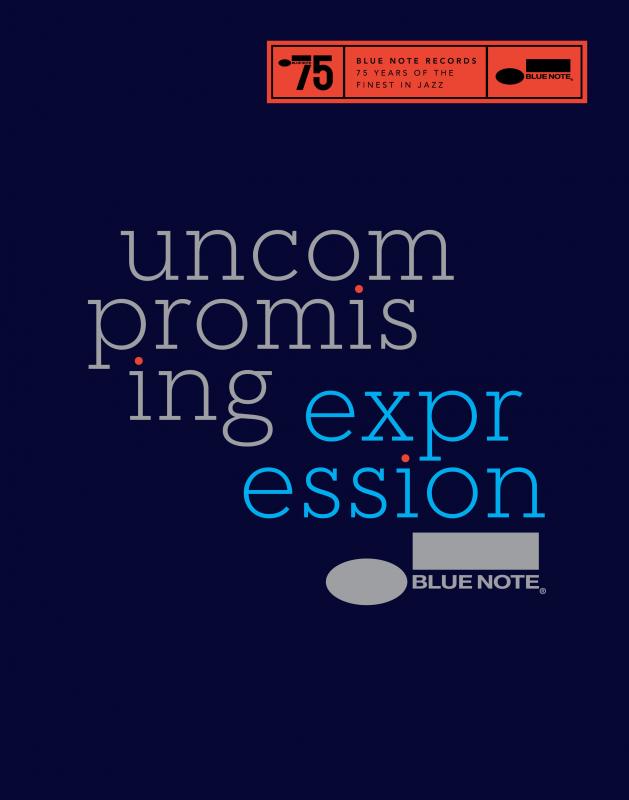Since 1939 Blue Note has established a reputation as the jazz purists label. For artists, it’s something of a pinnacle, to record for the famed label, a measurement of their own personal success, almost an opportunity to cement their legacy. Over the years the label has boasted the likes of John Coltrane, Sonny Rollins, Thelonious Monk, Herbie Hancock, Wayne Shorter, Art Blakey, Horace Silver, Jimmy Smith, Joe Henderson, Jackie Mclean, Dexter Gordan, Tony Williams and even Ornette Coleman, Cecil Taylor and Don Cherry during some of their more adventurous years. It’s a formidable list, particularly when you consider that the likes of Art Blakey and Horace Silver in particular were mainstays of the label even during troubled times.
Like he did recently with Verve, Richard Havers paints the labels history in broad strokes in a gorgeous coffee table book, again separating the development of the label into decades, accompanied with an extensive array of archival photographs and album covers. He interchanges the history of the label with a focus on key releases during the period, often a mix of the obscure and well known. Including Art Blakey and The Jazz Messengers self titled 1959 album, Jimmy Smith’s 1963 classic Back at the Chicken Shack, Don Cherry’s 1966 album Complete Communion where he warns this is jazz for ‘homes of the brave,’ and legendary pianist Bud Powell’s 1951 self explanatory album The Amazing Bud Powell.
Havers chronicles label owner Alfred Lion’s early years, arriving in New York from Nazi Germany, the subsequent development of the label, and his desire to issue music he viewed as important regardless of its commercial appeal. Havers also discusses Rudy Van Welder’s recordings, the in house studio for Blue Note beginning in his living room before moving out to a state of the art space in Englewood Cliffs. To many Van Gelder is the architect of Blue Note’s unique sound. In fact many of the architects behind the label have interesting stories, such as saxophonist Gil Melle, who released a few singles on Blue Note in 1953 and became the in house designer producing many the early Blue Note covers. He would later create the electronic music score to the 1956 sci fi thriller Forbidden Planet.
In May 1966 Blue Note was bought out by Liberty and with Lion gone the next few decades would see the label significantly impacted by corporate takeovers by parent companies all attempting to wring sales out of an asset they didn’t understand. Of course they still managed to release some incredible music, however it’s difficult to not see a label that lost its way in search of both an identity and sales. Havers does manage to identify some high points even in the darkest days, Bobby McFerrin’s 1986’s Spontaneous Inventions for example with some incredible accompaniment by Blue Note old guard Herbie Hancock and Wayne Shorter, NYC experimentalists Medeski Martin and Wood’s 1998 album Combustion, and Madlib’s 2003 album of remixes Shades of Blue.
In fact it’s Norah Jones 2002 mega blockbuster Come Away With Me, which surprised even Blue Note with its success, and confirmed their decision to move away from their legacy that has no doubt continued to finance their operations, allowing the opportunity to balance the likes Terence Blanchard, Robert Glasper and Gregory Porter with more vocal and some would say mainstream directions.
The final part of the book reads a little like a Blue Note press release, talking up the impact of new Chief Creative Officer Don Was and providing a positive spin on the much broader direction for the label, and hopes for a positive future. Though given the extraordinary access to the archives that Havers has been provided with, perhaps it’s no surprise.
This is not a book for reading in one sitting, you pick it up, pour over it, marvel at the photography and design and then put it down again to flick through later. As an archive of the golden age of Blue Note in particular, i.e. the 60’s and 70’s it’s unsurpassed and it’s impossible not to get caught up in Havers enthusiasm. At 400 pages surprisingly the one criticism could be its lack of depth, where the text takes a backseat to the pictures, album covers, and session notes, yet that’s not what this book is. Rather it’s a celebration of the label, both an introduction and an invitation to go digging.




